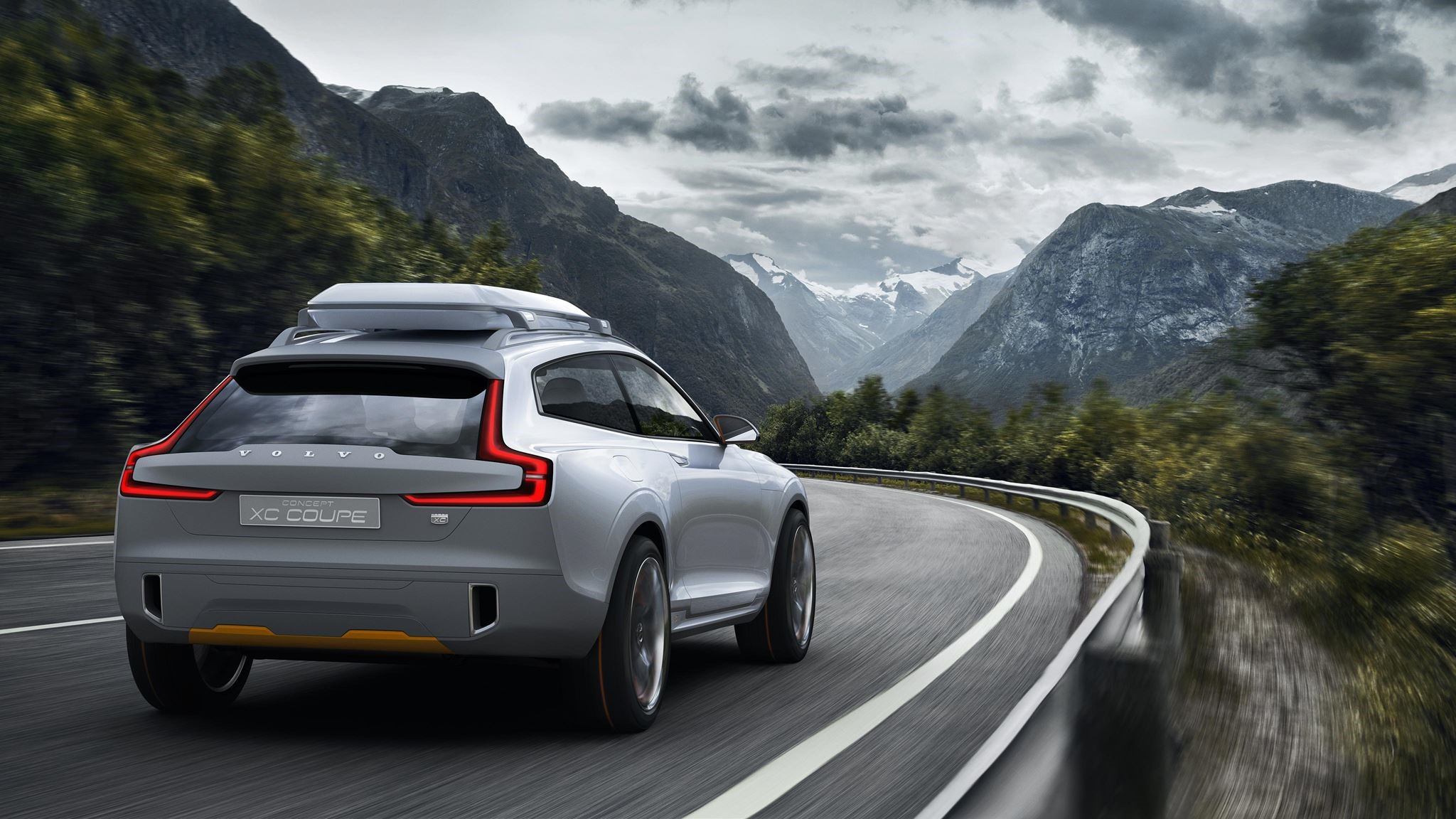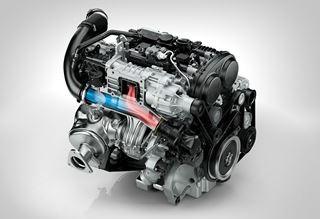Can Volvo Out-Innovate the Competition Again?

With a clean sheet and $11 billion, can Volvo innovate again?
Image Credit: Volvo Car Group, “Concept Coupe,” http://www.volvocars.com/us/cars/concept-cars/concept-coupe#, accessed November 2016.
In 2015, Håkan Samuelsson, the President and Chief Executive Officer of Volvo Cars, made a commitment that by 2025, Volvo will have delivered one million electrified cars to the global market and achieved climate neutral operations. “We are placing electrification at the centre of our product and sustainability strategy” [1]. This was a strong proclamation from a company that had been on the brink of bankruptcy only a few years before.
Early Innovation
Volvo started from humble beginnings, first making cars in 1927. The company grew modestly by focusing on manufacturing quality vehicles for its loyal customers. It wasn’t until 1959, however, that the company gained worldwide recognition when Volvo engineer Nils Bohlin introduced the three-point safety belt, a revolutionary innovation. The three-point safety belt has since gone on to save over one million lives, a result of Volvo waiving its patent rights so that the general population could benefit from its invention [2]. Volvo went on to be the first to introduce numerous other safety innovations, including rearward-facing child safety seats (1972), side-impact airbags (1994), and an oxygen-sensing probe that reduced harmful exhaust emissions by 90% (1976) [3].
Stymied by Detroit
In 1999, Ford bought Volvo for $6.45 billion and was added to Ford’s Premier Automotive Group (PAG), which included Jaguar, Aston Martin and Land Rover. Ford increased Volvo’s range of vehicles by leveraging Ford chassis designs and parts. Volvo struggled under Ford’s ownership, however, as the brand attracted little investment from its parent. When the global recession hit in 2008, Ford, who was already shedding non-core assets, decided to sell Volvo, whose losses were mounting, to Geely Holding Group, a Chinese automotive company. The deal closed in 2010 and was valued at $1.8 billion.
With its acquisition of Volvo, Geely hoped to emulate Tata Motors’ successful acquisitions of Jaguar and Land Rover, British brands that had regained their lost luster [4]. As part of the deal, Geely invested $11 billion in Volvo, strategically deciding to keep Volvo’s headquarters in Sweden and allowing management to operate autonomously.
New Beginnings: A Shift in Strategy
Image Credit: Volvo Car Group, “Concept XC Coupe,” http://www.volvocars.com/us/cars/concept-cars/concept-xc-coupe#, accessed November 2016.
With a clean slate and a significant capital infusion, Volvo’s management had the rare opportunity within the automotive manufacturing industry of being able to decide on a new path forward. As the company pondered its future, Volvo knew it operated in a highly regulated industry with a constantly increasing focus on emissions standards. In fact, the U.S. Environmental Protection Agency had recently adopted California’s emissions standards, which were the most stringent in the U.S., as the national standard [5]. These EPA standards were to be established in two phases, the first that ran from 2012 to 2016 and the second from 2017 to 2025 [6].
In conjunction with its analysis on emissions standards, Volvo additionally studied how humans interacted with their cars. It concluded that most drivers rarely pushed their cars past 4,000 RPMs, and thus did not actually experience the peak performance of their powerful V6 or V8 engines. Drivers did, however, experience the peak gas consumption associated with these engines. Volvo therefore determined that the only path to take was to abandon V6 and V8 engines and only produce four-cylinder drivetrains that delivered better fuel efficiency and matched the driving behaviors of the population [7].
Re-Innovating Again
Image Credit: Volvo Car Group, “Drive-E,” http://www.volvocars.com/us/about/our-innovations/drive-e, accessed November 2016.
With sights finally set on its new direction, and with money to spend, Volvo engineers designed and built a 2.0-liter four-cylinder engine with a turbocharger and supercharger called the T6 Drive-E. The engine delivered more power at lower revolutions, without the downside of turbo lag, producing 320 horsepower. The company also designed a hybrid model of the engine, which included an electric motor component that supplemented the gasoline engine, producing a combined 400 horsepower [8].
In 2016, Volvo’s T6 engine was named one of Wards Auto’s 10 best engines. “Volvo has created an engine that can match big naturally aspirated V6s in power and torque and also cream them in real-world fuel efficiency when powering big vehicles. The T6 promises to be a perfect fit for a lot of Volvos coming down the road and is proving out a new strategy for squeezing more performance and efficiency from smaller and smaller engines” [9].
The Future Path Towards Sustainability
Despite the resounding success of its new engines to date, Volvo is not resting on its laurels – it has set lofty sustainability goals for 2025. As Volvo works towards its ambitious goals, though, it needs to ensure that its sustainability initiative is introduced into its supply chain, as well. Can Volvo achieve its goals? It’ll take some real innovation. Fortunately, Volvo has some experience in that.
Word Count: 767 words
[1] Volvo Car Group, 2015 Sustainability Report, p. 5, http://www.volvocars.com/intl/about/our-company/sustainability, accessed November 2016.
[2] Volvo Car Group, “Innovations,” http://www.volvocars.com/us/about/our-company/heritage/innovations, access November 2016.
[3] Ibid.
[4] Vikas Bajaj, “Tata Motors Finds Success in Jaguar Land Rover,” New York Times, August 30, 2012, http://www.nytimes.com/2012/08/31/business/global/tata-motors-finds-success-in-jaguar-land-rover.html, accessed November 2016.
[5] U.S. Environmental Protection Agency, “Regulations for Greenhouse Gas Emissions from Passenger Cars and Trucks,” https://www.epa.gov/regulations-emissions-vehicles-and-engines/regulations-greenhouse-gas-emissions-passenger-cars-and, accessed November 2016.
[6] Ibid.
[7] Jordon Golson, “Volvo Bets its Future on Small, Turbocharged Engines,” Wired, October 20, 2014, https://www.wired.com/2014/10/volvo-turbo-engine-concept/, accessed November 2016.
[8] Ibid.
[9] Drew Winter, “2016 Winner: Volvo XC90 T6 2.0L Turbo/Super-4,” WardsAuto, January 8, 2016, http://wardsauto.com/10-best-engines/2016-winner-volvo-xc90-t6-20l-turbosuper-4, accessed November 2016.






Great piece on Volvo and how one carmaker is matching climate concerns with product innovation and consumer needs. Volvo’s value proposition for many years has been high levels of safety; with the new T6 engine, Volvo can add to that value prop an eco-friendly design and consistently high performance. Innovations like these propel the entire automotive industry to build more fuel-efficient engines in order to remain competitive. Therefore, Volvo’s goal of 1 million electric cars by 2025 has a ripple effect throughout the industry that should lead to far more than 1 million electric cars on the road, which is a win for all champions of climate change.
Its interesting to see how much the consumer can drive change in one industry. Over the past decade, the consumer has become more conscious of their carbon footprint which has directly made an impact on the expectations of the automotive industry. Its ironic that Volvo, being the first company to innovate for fuel efficiency with the installation of an O2 sensor, has taken many years to innovate an eco-friendly and high performing engine. This is most likely due to its lack of funding from Ford, to consistently be on the forefront of innovation, and difference in corporate model, Ford’s model being volume based rather than quality based. As Volvo has set out with is ambitious goals for 2025, it will be interesting to see how the electric engine changes over the next decade. Will the technology that Volvo created today be enough to gain consumer awareness and market share to finance their continued innvoation? If/when the market becomes saturated with electric cars, where else will car manufacturers have to innovate to stay ahead in the carbon footprint challenge?
Very interesting post and very informative, specially to those like me with very little knowledge on cars. Growing up, I recall how Volvo always had the most precious value added: safety. Having a Volvo or purchasing one meant that you prioritized safety above all and you were willing to pay a higher price for it. As an extra, you received gorgeous and powerful four wheels.
My take on Volvo is that for the past decade it lost its value added not because of the lack of its safety measures but because of the loss of its uniqueness by being followed by competitors. It will be very interesting in deed to see in Volvo can replicate its 20th century model in the current landscape by providing the consumer a value added that has a powerful meaning past beyond the technical specs of the cars.
Loved the article. I wrote about Tata and briefly touched upon Tata Motors and their sustainability policies. In fact, it is very interesting for me to see that Volvo has clearly gone beyond just complying with the regulations, but has actually made sustainability a core part of its business strategy by proactively setting climate change targets and shifting its customer value proposition to more fuel efficient cars. This blog reminds me of one of a Tata example that I didn’t include in my post: One of Tata’s recent eco-friendly product launches have been controversial such as the $1,000 Tata Nano which is more fuel efficient than most cars in India, but because it is so cheap, environmentalists fear that it will substantially add traffic to the already congested Indian roads.
I agree with your point on introducing the sustainability initiatives in the supply chain and measure the footprint of its process across the entire value chain. I truly believe that we need champions in various industries to lead by example and educate all of the stakeholders they interact with to adopt these measures.
I think a lesson here is also that if you think about sustainability, you will also be able to serve your customer better- in this case understanding what the customer actually needed and how he/she interacted with Volvo cars not only helped with sustainability design, but also helped the company build a ‘better’ car for its customers.